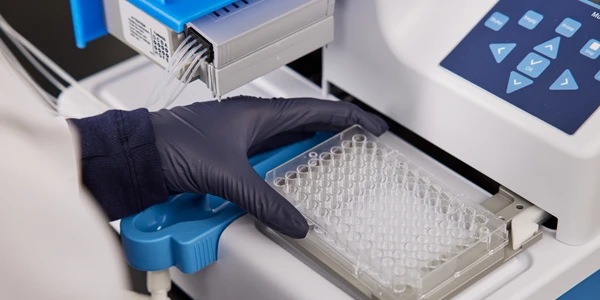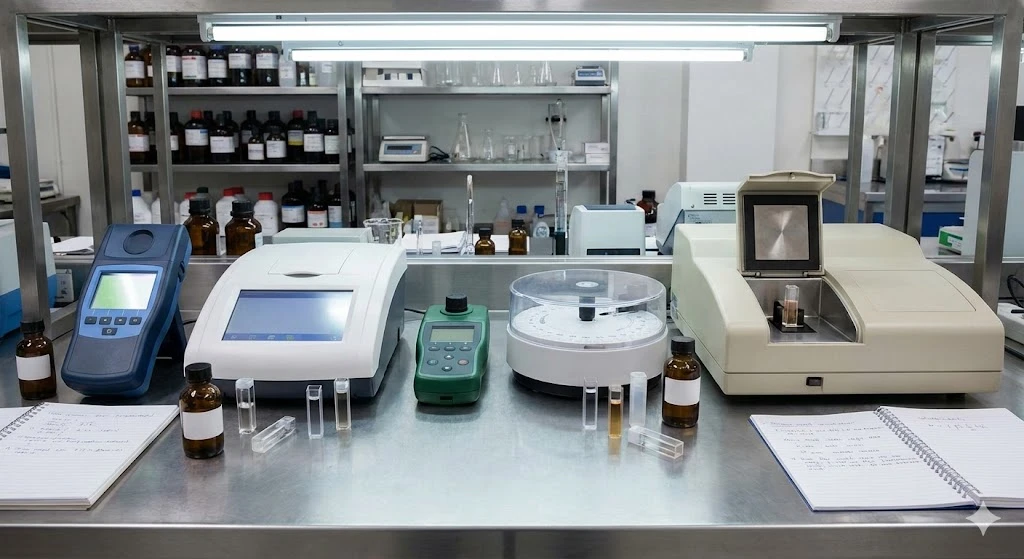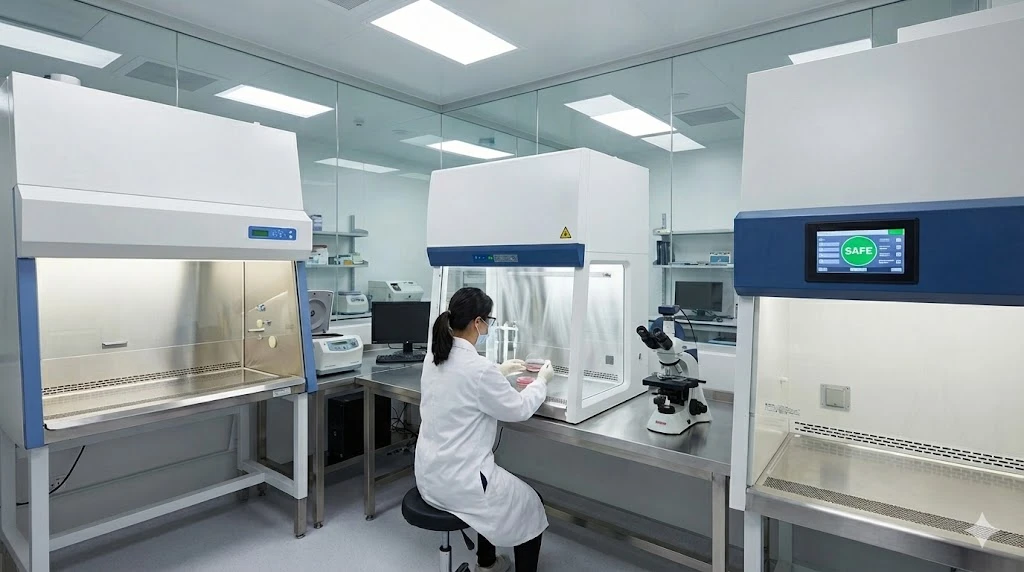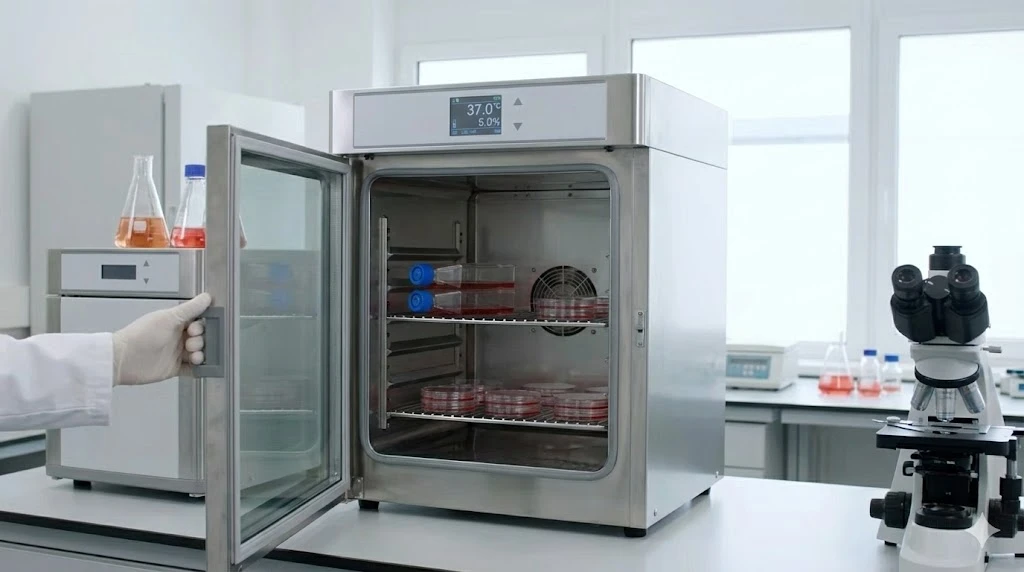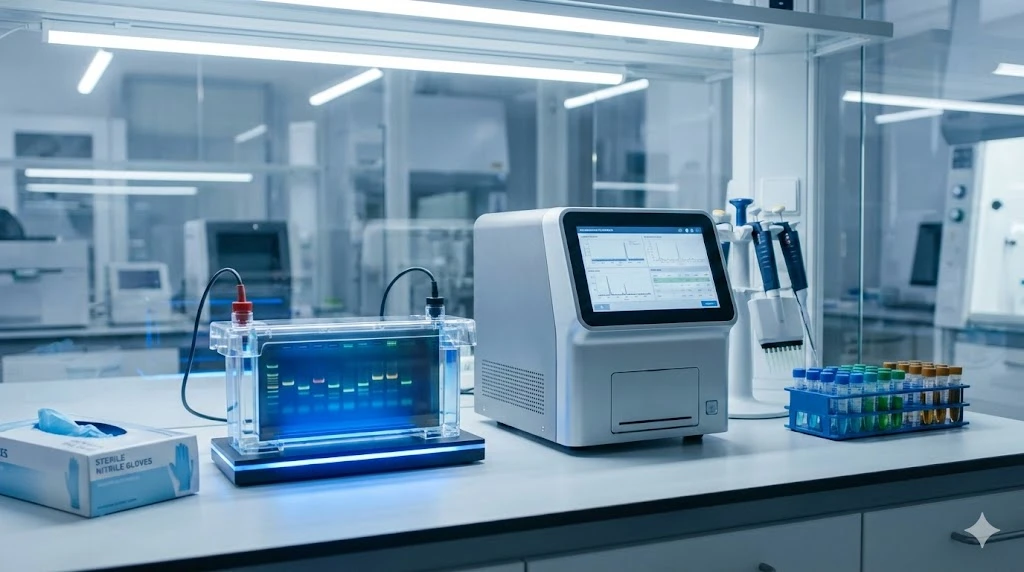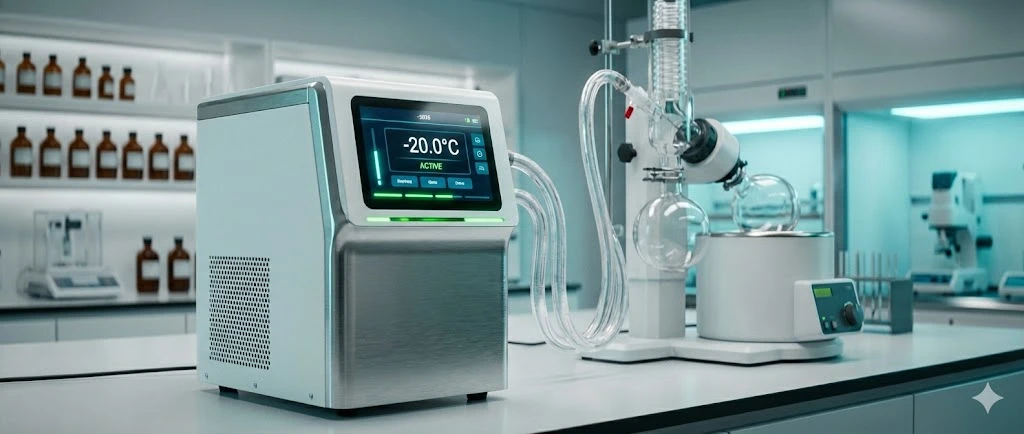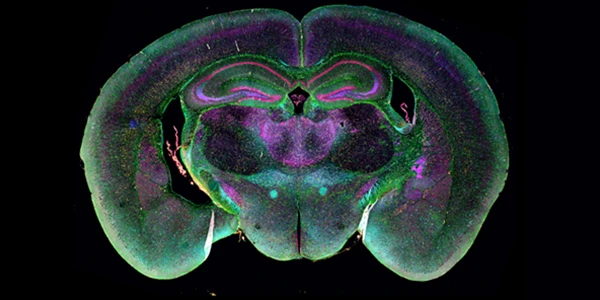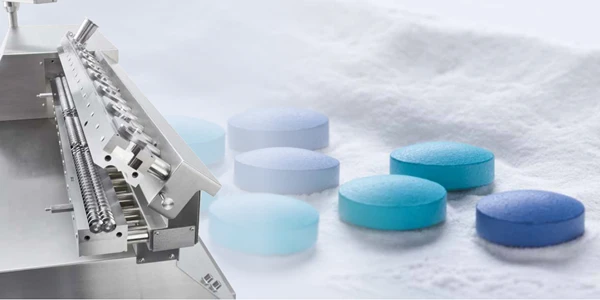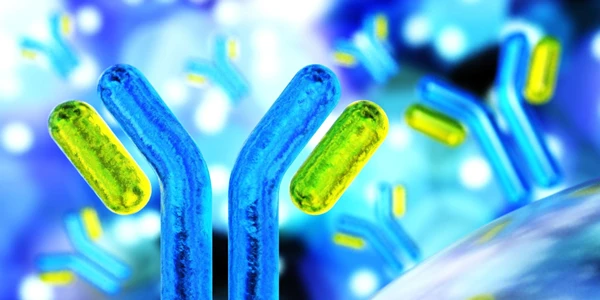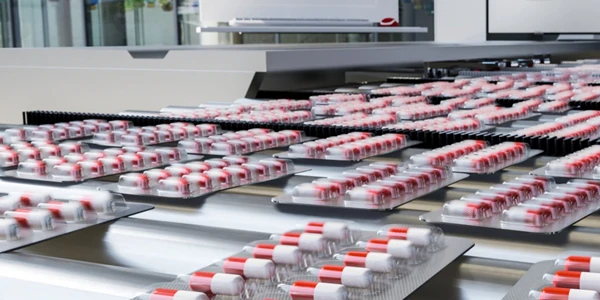Maintaining Scintillation Counters: Quench Correction and Efficiency
GEMINI (2025) Reliable radioisotope quantification is central to numerous laboratory disciplines, from molecular biology to environmental monitoring, making the task of maintaining scintillation counters paramount. The consistent and accurate performance of liquid scintillation counting (LSC) hinges on a deep understanding of instrument physics and the common pitfalls that compromise measurement integrity. Precision in LSC is critically affected by factors such as spectral shift and signal loss, which, if unaddressed, lead to significant errors in calculated disintegrations per minute (DPM). The consistent performance of the light detection system is crucial when maintaining scintillation counters for low-energy isotopes. This article outlines the specialized knowledge and procedures required for proper instrument upkeep. Liquid scintillation counting operates by converting the energy from radioactive decay events into measurable light pulses. The decay particle, typically a beta particle or alpha particle, interacts with the solvent molecules (the primary solvent) in the scintillation cocktail, exciting them. This energy is then transferred to the fluor, or scintillator (the primary solute), which emits photons upon de-excitation. These photons are subsequently detected by photomultiplier tubes (PMTs). The instrument measures the total light output, which is theoretically proportional to the energy of the emitted decay particle. However, any process that interferes with this energy transfer or light collection chain reduces the observed count rate, necessitating rigorous steps for maintaining scintillation counters to uphold proportionality. The measured energy spectrum is crucial for instrument calibration. Low-energy isotopes like tritium and carbon-14 present distinct spectral challenges due to their relatively low maximum energies and susceptibility to environmental factors. The detection system employs coincidence counting, where two PMTs simultaneously detect a photon event, to filter out background noise and spurious counts. The integrity of this coincidence circuitry must be verified regularly as part of maintaining scintillation counters protocols. The consistent performance relies heavily on the stability of the PMT high-voltage supply and the linearity of the energy response across the entire detection range. Quenching represents any process that diminishes the light output generated by the scintillation event before it reaches the PMTs, leading to an artificially reduced counting efficiency. This is the single largest source of error when maintaining scintillation counters for long-term use. Understanding the spectral shift caused by color and chemical quench is the first step in maintaining scintillation counters calibration integrity. Quenching is broadly categorized into two types: chemical and color. Chemical quenching: This occurs when substances in the sample interfere with the energy transfer mechanism between the primary solvent, the fluor, or the decay particle itself. Common chemical quenchers include water, oxygen, and acidic or basic compounds. These quenchers act as competing energy sinks, dissipating the energy non-radiatively before light emission can occur. This results in a leftward shift of the entire pulse height spectrum, simulating a lower-energy decay event. Color quenching: This occurs when colored compounds in the sample or vial absorb the photons emitted by the fluor before they reach the PMTs. Common sources include pigmented biological tissues, stained filters, or precipitates. This type of quench reduces the light pulse intensity without altering the initial energy transfer, though the spectral effect is similar to chemical quenching. The severity of quenching is directly related to the shift in the pulse height spectrum. As quenching increases, the spectral distribution shifts toward lower energies, which necessitates specific correction protocols when maintaining scintillation counters and interpreting data. Ignoring or incorrectly correcting for quenching can lead to underestimation of sample activity by as much as 50 percent or more, rendering the data invalid. Since quenching is often unavoidable, effective quench correction is integral to maintaining scintillation counters and converting observed counts per minute (CPM) back to the true disintegration rate (DPM). This process establishes a quantitative relationship between a measured quench indicator and the counting efficiency for a specific isotope. Several methodologies are employed, and accurate quench correction methods are indispensable for any laboratory focused on maintaining scintillation counters efficacy. Method Principle Indicator Example External Standardization A traceable, external gamma source (e.g., barium-133, europium-152) is placed near the vial. The source Compton scatters electrons within the sample/cocktail, and the resulting spectrum is used to calculate a quench indicator value. Transformed Standardized Index of External reference (tSIE) Internal Standardization A known, traceable amount of the assayed radioisotope is added to the quenched sample post-measurement, and the sample is recounted. Direct efficiency calculation Sample Channels Ratio (SCR) Measures the ratio of counts observed in two predefined, high- and low-energy channels. This ratio changes predictably with increasing quench. Channels Ratio (CR) The creation and verification of a comprehensive quench curve are fundamental to maintaining scintillation counters accuracy. A quench curve is generated by preparing a set of standard samples with a constant amount of radionuclide (e.g., carbon-14) but with varying, controlled additions of a quenching agent (e.g., carbon tetrachloride or nitromethane). The efficiency for each standard is plotted against the measured quench indicator value (e.g., tSIE) to establish a mathematical correction polynomial or curve fitting that is then applied to unknown samples. Accurate quench correction is essential to maintaining scintillation counters and avoiding the systematic underreporting of activity. Optimization involves maximizing the counting efficiency for the isotope of interest while simultaneously minimizing background noise. This dual goal is key for maintaining scintillation counters to achieve the lowest possible limits of detection. Optimization of the counting efficiency is an ongoing process essential to maintaining scintillation counters optimal performance. Isotope Selection and Window Setting: The energy window (channels) must be carefully set to capture the maximum number of counts for the specific isotope (e.g., the low-energy peak of tritium or the higher-energy spectrum of carbon-14 while excluding background noise and crosstalk from other channels. Proper window setting is critical; for instance, setting the lower level discriminator (LLD) too high can exclude true low-energy counts affected by quench, while setting the upper level discriminator (ULD) too high can increase background. Cocktail and Vial Compatibility: Selecting the appropriate scintillation cocktail is crucial. High-efficiency, low-background cocktails are preferred. Glass vials generally offer lower background than plastic vials but may be incompatible with certain chemical compounds. For highly aqueous samples, microemulsion cocktails must be used, which requires careful optimization of sample-to-cocktail volume ratios to prevent phase separation (clouding), a severe form of quench. Preventing Luminescence: Light emission that is not related to radioactive decay (luminescence) can artificially inflate the count rate. Maintaining scintillation counters involves the use of instrument features like coincidence counting and time-delayed counting to discriminate against these non-radioactive light sources. Chemiluminescence: Light produced by non-radioactive chemical reactions in the sample, typically decaying relatively slowly. The use of dark adaptation (allowing the sample to sit in the counting chamber for a period before counting) or the application of proprietary anti-chemiluminescence agents in the cocktail helps mitigate this. Phosphorescence: Delayed emission of light after excitation by ambient light, which can be minimized by dark-adapting samples before counting. Volume Consistency: Any variation in the sample-to-cocktail volume ratio can introduce variability in quenching and geometry, potentially invalidating the quench curve. Maintaining strict, consistent volumes for all standards and unknowns is paramount. The longevity and reliable performance of a liquid scintillation counter depend on adherence to rigorous and scheduled maintenance protocols. This goes beyond routine calibration and includes environmental and operational considerations. Environmental Control: The instrument should be situated in a temperature-controlled environment, as fluctuations can affect PMT gain and counting electronics. Excessive light exposure, which can induce phosphorescence in samples, must also be controlled. Daily and Weekly Checks: Regular performance monitoring using instrument-specific standards (e.g., sealed check sources or pre-quenched standards) should be performed to track instrument stability, energy resolution, and background. Significant deviations require immediate investigation. Performance checks should include measuring the background count rate using a blank vial prepared with the same cocktail and water volume as the samples. The precise calibration of the external standard source is another element in successfully maintaining scintillation counters readiness. System Cleaning: The light-tight counting chamber and the sample changer mechanism require periodic cleaning to prevent contamination from spilled samples or dust, which can introduce color quenching or high background counts. Failure to perform periodic system cleaning negatively impacts the effectiveness of maintaining scintillation counters in high-throughput environments. Specific, non-reactive cleaning agents must be used to avoid damaging the PMT surfaces or the reflector material within the counting chamber. PMT Voltage and Gain Calibration: The photomultiplier tubes are the heart of the detection system. Their high-voltage settings (gain) must be regularly calibrated by the service provider or trained staff to ensure the consistent pulse height spectrum required for accurate quench correction and overall performance when maintaining scintillation counters. This calibration ensures that the energy window settings correspond accurately to the emitted particle energies. Effective maintaining scintillation counters requires a holistic approach, integrating precise chemical and spectral analysis with regular physical upkeep. All records of maintenance, performance checks, and quench curve generations must be meticulously logged as part of the quality system. Maintaining scintillation counters is not merely a technical task but a critical quality assurance process that directly impacts the validity of experimental and diagnostic data. The core challenge involves recognizing, quantifying, and correcting for signal quenching, primarily through external standardization and the precise construction of quench curves. Optimization of counting parameters, coupled with rigorous preventive maintenance and environmental controls, ensures that the instrument consistently delivers proportional and highly accurate results. Adherence to these protocols minimizes systematic error and maximizes the operational lifespan of the instrumentation. By integrating these practices, laboratory professionals uphold the highest standards of radiometric measurement accuracy. How often should the quench curve be verified when maintaining scintillation counters? The quench curve should be verified periodically, typically every six months to one year, or whenever a new batch of scintillation cocktail is introduced, a major system repair is conducted, or if the instrument’s performance monitoring data indicates a shift in the standard's measured quench index. What is the primary difference between a CPM and a DPM measurement? Counts per minute (CPM) is the raw, observed count rate measured by the instrument, while disintegrations per minute (DPM) is the actual rate of radioactive decay in the sample. DPM is calculated by dividing CPM by the counting efficiency, with efficiency being determined via quench correction methods. Can chemical quenching be entirely eliminated from a liquid scintillation sample? Complete elimination is often impossible, especially with complex biological or environmental matrices. The goal when maintaining scintillation counters is to standardize the level of quench across all samples and standards, or to utilize sophisticated counting protocols like phase analysis to minimize its impact, ensuring the correction process remains accurate. Why is controlling the operating environment crucial for scintillation counters? Environmental control prevents fluctuations in temperature and ambient light that can destabilize photomultiplier tube gain and induce phosphorescence in samples, leading to unpredictable efficiency and artificially high background counts that compromise the integrity of the counting system. This article was created with the assistance of Generative AI and has undergone editorial review before publishing.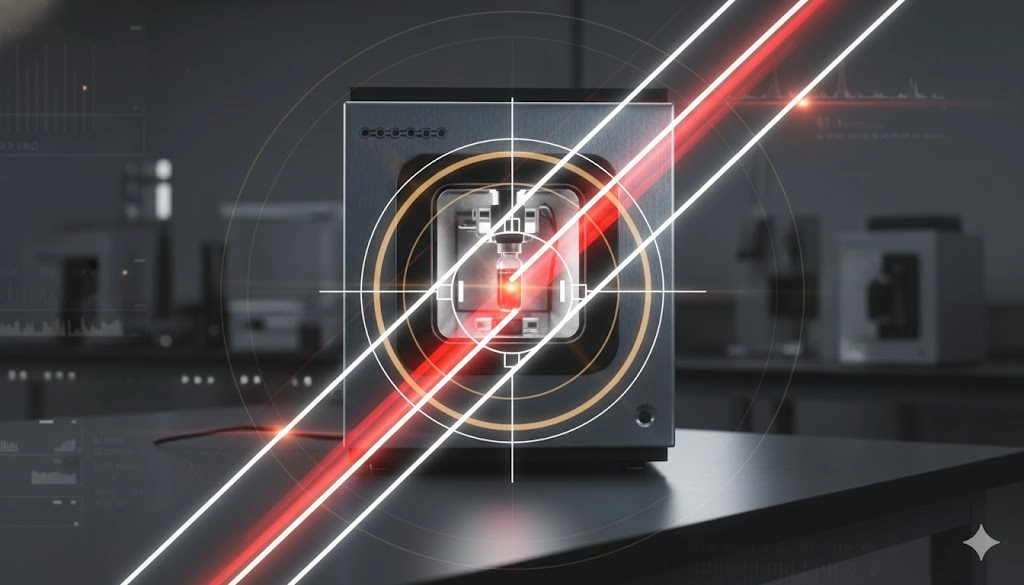
Principles of Liquid Scintillation Counting and Instrument Operation
Mechanisms and Impacts of Quenching in Scintillation Counting
Quench Correction Methods: External Standards and Quench Curve Generation
Optimizing Scintillation Counter Efficiency and Background Reduction
Protocol Implementation for Scintillation Counter Maintenance and Longevity
Ensuring Data Integrity Through Effective Scintillation Counter Maintenance
Frequently Asked Questions on Maintaining Scintillation Counters
